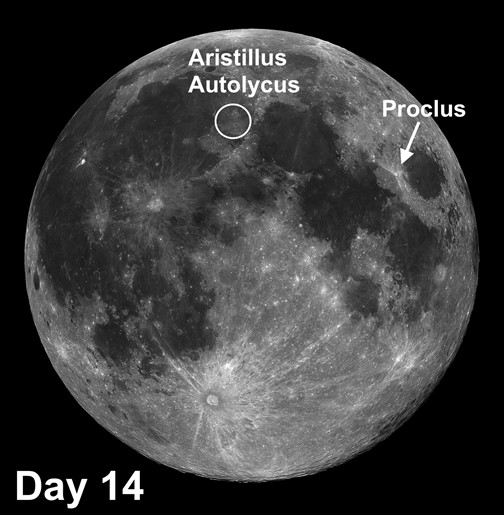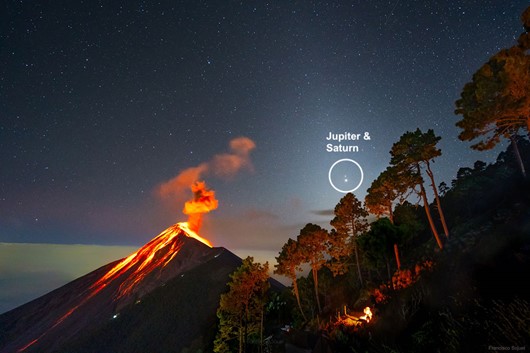The week of December 28 – January 3 takes us from Lunar Day 14 to 20. This week we will highlight the craters Proclus and Aristillus.
 Aristillus: [NE/F10] We were first introduced to Aristillus on Day 7 when its more complex features (ramparts, central mountain peaks, terraces, etc.) were conspicuous because of the low sun angle. We can now see that Aristillus is also at the center of a ray system, which means that the crater is less than a billion years old – a mere youngster in lunar terms!
Aristillus: [NE/F10] We were first introduced to Aristillus on Day 7 when its more complex features (ramparts, central mountain peaks, terraces, etc.) were conspicuous because of the low sun angle. We can now see that Aristillus is also at the center of a ray system, which means that the crater is less than a billion years old – a mere youngster in lunar terms!
 Proclus: [NE/H14] Proclus is a small crater located just west of Mare Crisium. In spite of its size, it is one of the brightest spots on the Moon. When you view it around full Moon, you will notice it also has a system of rays that delicately fan out in a telltale butterfly-wing pattern, which tells you a lot about the flight path of the incoming projectile. Proclus is one of the best examples of what happens during a low-angle impact.
Proclus: [NE/H14] Proclus is a small crater located just west of Mare Crisium. In spite of its size, it is one of the brightest spots on the Moon. When you view it around full Moon, you will notice it also has a system of rays that delicately fan out in a telltale butterfly-wing pattern, which tells you a lot about the flight path of the incoming projectile. Proclus is one of the best examples of what happens during a low-angle impact.
OF ADDITIONAL INTEREST IN SPACE:
As I mentioned in last week’s Blog, Jupiter & Saturn are the closest they have been in 396 years. Here is an astonishing photo of their conjunction from Guatamala over an exploding volcano (from APOD)…
======================
It is highly recommended that you get a copy of Sky and Telescope’s Field Map of the Moon, the very finest Moon map available for use at the telescope. It is available for $10.95 at www.skyandtelescope.com and on Amazon. All features mentioned in this blog will be keyed to the grid on the Field Map and will look like this: Plato: [NW/D9]
Credits:
Courtesy of Gray Photography of Corpus Christi, Texas
Lunar photos: NASA / USGS / BMDO / LROC / ASU / DLR / LOLA / Moon Globe. Used by permission
- Rupes Cauchy: A Best Known Fault on the Moon - July 22, 2024
- Moon Crater Schickard – Crater Floor has Stripes - July 15, 2024
- Moon Craters Langrenus and Vandelinus - July 8, 2024
